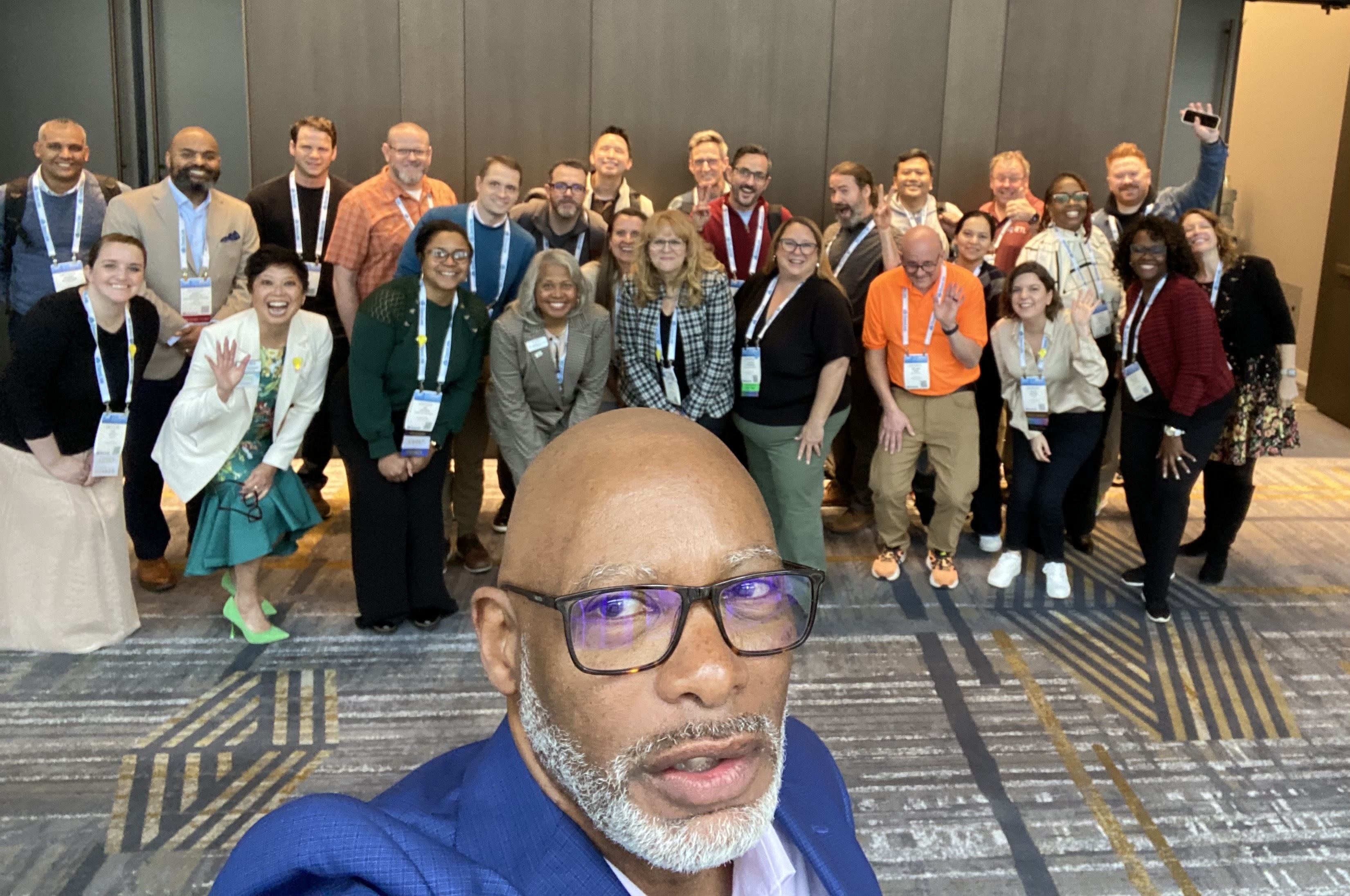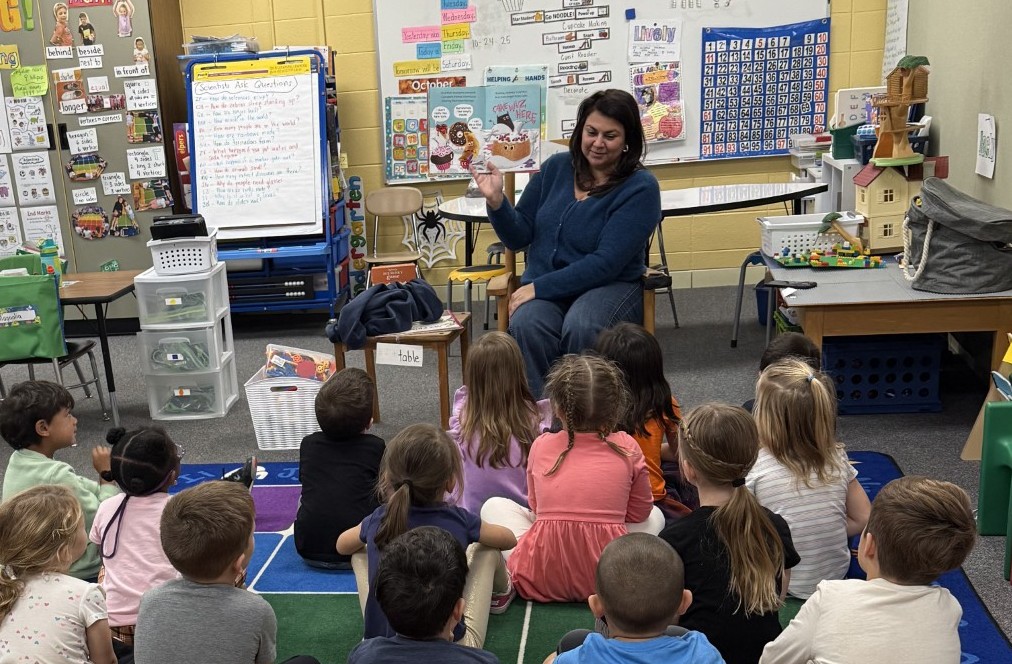The Power of Community: Developing the Next Generation of Edtech Leaders
“We lead people, not the work.” During the recent CoSN conference, edtech leaders came together to discuss how to build stronger succession pipelines.

Is your school district developing a healthy pipeline to ensure your schools are staffed with passionate, dedicated leaders? Are you looking for tips to better develop this pipeline? At the 2025 Consortium of School Networking (CoSN) conference, attendees gathered for the fourth annual Network Meetup to discuss these questions, and to collaborate on driving action plans.
The presenters shared the following guiding questions to the attendees, who worked in small groups to discuss the practical steps school districts can take to build a healthy pipeline that represents all voices.
Question 1: Why is it important to build a pipeline and recruit non-traditional talent?
The answer is multifaceted and deeply rooted in the fundamental principles of inclusiveness, effectiveness, and innovation. Viewing difference not as a hurdle, but as a valuable asset, unlocks a wealth of potential for the edtech field.
The attendees noted that, as school district leaders, we have to start rethinking traditional pathways to careers in edtech. They discussed the importance of focusing on teachable skills – not just on degrees – in order to reduce barriers that might discourage people from considering careers in the field.
The benefits of actively recruiting from non-traditional job candidates included:
- Bringing diverse perspectives: Different backgrounds and lived experiences fuel creativity and lead to more innovative and effective technological solutions.
- Better serving your students: The more the edtech field reflects the diversity of the student population, the better equipped it will be to understand and cater to their varied needs.
- Avoiding underrepresentation and reducing barriers: Intentional recruitment efforts directly address systemic inequities and create fairer opportunities for all.
- Sustainability in engagement: In a challenging climate for teacher recruitment and retention, we cannot afford to overlook valuable talent. Building an inclusive environment fosters a stronger sense of belonging and can improve staff engagement and longevity.
- If we don’t intentionally build the pipeline, we won’t ever get the pool of people of which to hire/promote: This proactive approach is not just a matter of fairness. It's a strategic imperative.
- It’s our job to build these recruits, and to reach out to find people: We must actively market ourselves and the opportunities within edtech to diverse communities.
Addressing this work requires the courage to acknowledge differences and speak out when there is a clear lack of diversity. It necessitates relying on allies who are willing to be brave and vulnerable, built upon a foundation of trust. Finding common goals is essential to move forward collaboratively.
Question 2: How are you building an inclusive culture in your district?
Creating a truly inclusive culture requires intentional effort and a commitment to fostering an environment in which everyone feels valued, respected, and a sense of belonging. This goes beyond mere tolerance and actively celebrates the richness that diversity brings. Ideas discussed included:
Tools and ideas to transform education. Sign up below.
- Ensure a variety of backgrounds are represented: One powerful step is to ensure individuals see others in the team/school/district that represent them. This visual representation can be incredibly impactful in fostering a sense of belonging and validating diverse identities.
- Lead with people first: The most critical element to growing your pipeline is the human connection. We lead people, not the work. We need to provide environments in which it is okay to make mistakes, and foster a culture of learning and growth for everyone. It’s crucial to recognize that we don’t expect every employee to work the same way we do. Embracing individual differences and working styles is a cornerstone of an inclusive culture.
- Consider varying work hours: Offering differing work hours when feasible can also accommodate diverse needs and preferences. It’s important to acknowledge that traditional education systems can sometimes inadvertently train out the acceptance of diverse approaches, often emphasizing a singular "right answer." We must actively challenge this mindset and be aware of potential unconscious bias that might lead to placing different expectations on certain students or colleagues.
- Create opportunities for students to learn more about careers in edtech: Creating internship programs among students can provide invaluable opportunities to learn about careers in edtech. Platforms such as Floreo, which offer virtual scenarios for practicing understanding in various careers, can also be valuable tools. Consider hosting career fairs where students can meet a variety of school staff and learn more about the benefits of edtech careers.
Question 3: How do you identify and grow leaders in your district?
Cultivating strong and diverse leadership is essential for the long-term success and inclusivity of any educational organization. This process begins with self-awareness: Know yourself.
It also involves a direct and simple step: Ask people if they want to lead.
Some of the components of effective leadership discussed in the groups included:
- Listen, watch, discuss: It’s also crucial to begin with the end in mind, envisioning the type of leadership needed to achieve the district’s goals.
- Focus on strengths rather than deficits: Think about the skills each staff member has, and consider how these skills can support your district work – even if these skills are not included in the traditional job description.
- Build a culture of celebration: Building a positive and supportive environment is key. It’s not about your success, it’s about how to help your team grow.
- Lesson in humility: Hire people who are smarter than you – and bring new skills to your team. Validate your team’s strengths. Don’t be afraid of what you don’t know.
- Hold regular 1:1s with your team: Give your team the opportunity to identify their career goals and interests and offer them challenging yet achievable goals. Providing timely and constructive feedback is crucial for growth. When you see areas of improvement, pull them aside and give feedback.
- Identify natural leaders: Many attendees shared stories about an ally in leadership who saw their potential as leaders and encouraged them to pursue a leadership career track. They credited this recognition as giving them the courage to pursue leadership positions, often when they hadn’t considered it themselves. Attendees suggested that leaders should intentionally identify someone you think can lead your team, have them shadow your work to really know what it’s like to be in your shoes, and conduct regular check-ins to support their development.
Understanding team dynamics, such as those outlined in The Five Dysfunctions of a Team, can inform leadership development strategies. Utilizing a Skill:Will matrix can help leaders understand their team's capacity and tailor development opportunities accordingly. Embracing a Growth Mindset is essential for both leaders and those they are developing.
Ultimately, effective leadership involves working with people from their strengths, not weaknesses, and elevating leaders who can compensate for areas that may be missing.
Christine Weiser is the Content and Brand Director for Tech & Learning, and has been with the company since 2008. She has reported on education for most of her career, working at Scholastic and Gale Publishing before joining Tech & Learning. Christine is also an author and musician, and lives in Philadelphia with her husband and son.
